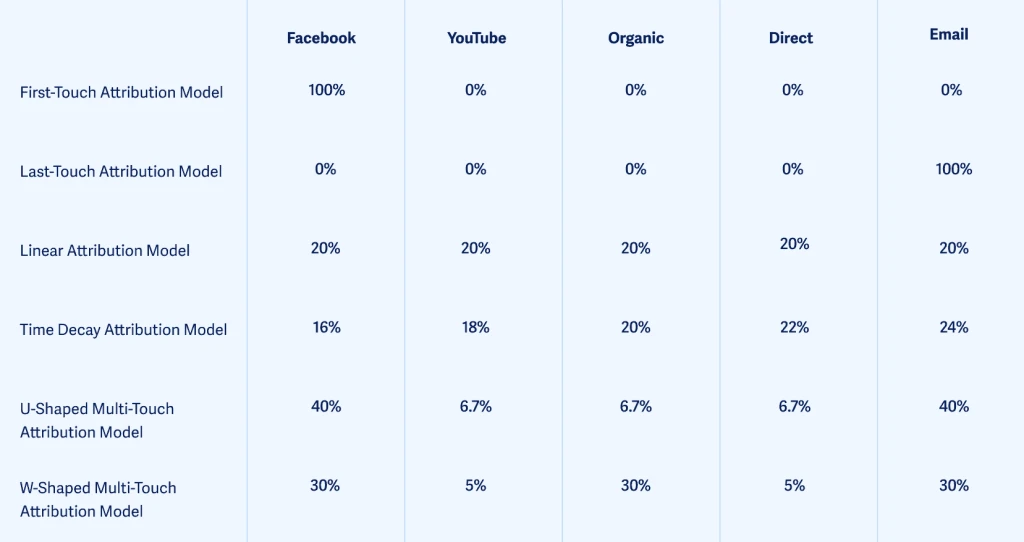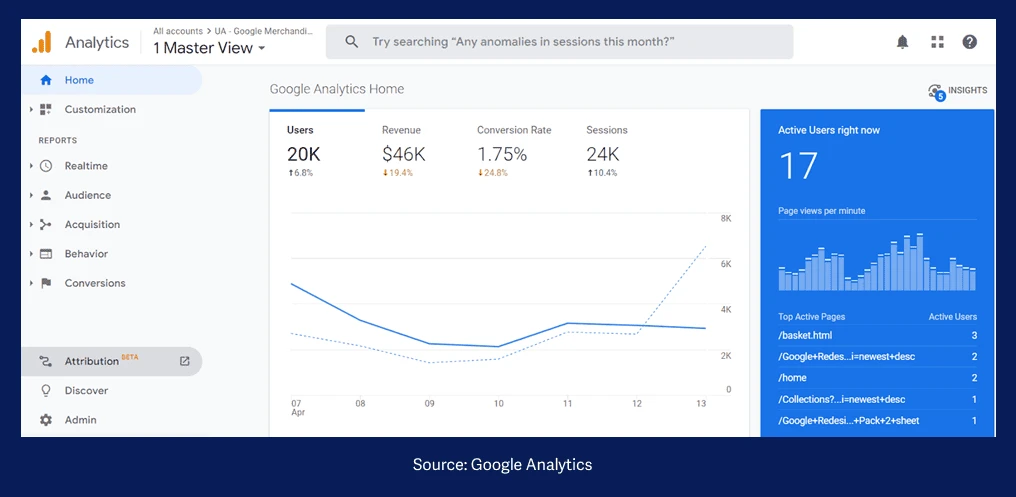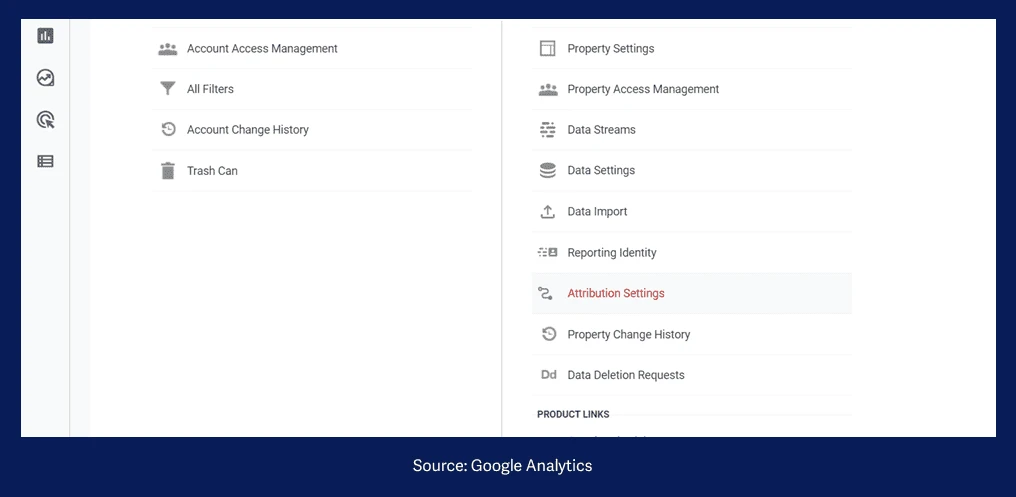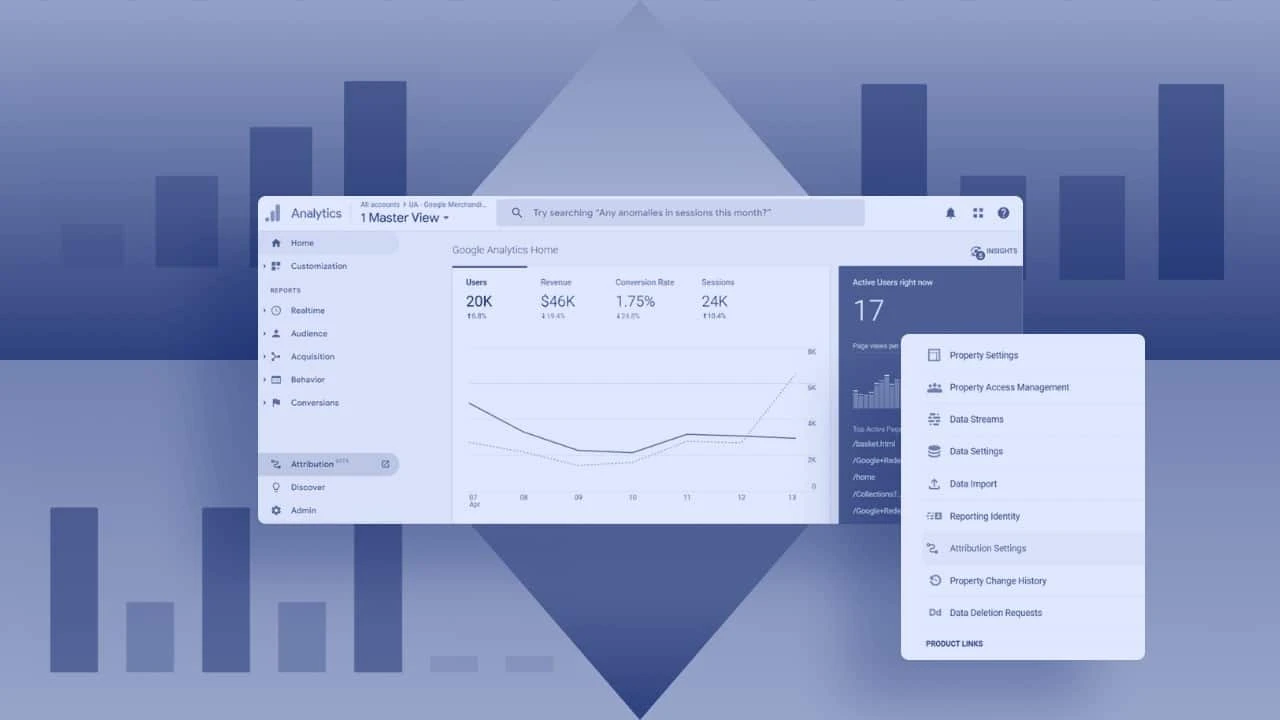One of the most common questions that come up in a team meeting of marketers is “*what worked?” *which is often followed by another question – “*how can we capitalize on that?”. *Marketers spend hours on competitor research and reverse engineering viral campaigns to understand how and why they were successful marketing strategies. This information is critical for marketing teams to design and implement strategies and campaigns that lead to results.
Several elements and factors are involved in designing such campaigns and strategies – from content and messaging to marketing channels (i.e. social media) and timing. In today’s article, we want to talk about attribution modeling – a method used to assess the efficiency of the marketing channels used for a particular campaign.
What is attribution modeling?
One of the things that you learn very soon as a marketer is not to put all your eggs in one basket. You need to diversify and promote across multiple channels and tap into different lead sources. When creating a customer journey, you need multiple touchpoints where prospective leads interact with your product and/or service. But unless you’re a Fortune 500 company, you can’t spend much money on all these channels and touchpoints. Resources are limited and it’s important to understand where the majority (or a significant portion) of your customers come from and optimize your marketing efforts accordingly.
The almighty Google defines the attribution model as “the rule or set of rules, that determines how credit for sales and conversions is assigned to touchpoints in conversion paths.” In simpler terms, attribution modeling helps credit the channels that drove conversions. You can think of it as grading marketing channels and touchpoints within the buyer’s journey based on lead conversions. Was it the Facebook ad, the second follow-up email, or the influencer’s post on TikTok?
Why do attribution models matter in digital marketing?
Attribution models in digital marketing serve as an assessment and evaluation framework. It helps marketing teams determine which marketing activities are driving the most leads in different stages of the sales funnel. All successful marketing campaigns are built on the failures, successes, and lessons learned from the ones that came before them.
Due to attribution models, marketers are able to:
-
Figure out the efficiency of your channels and touchpoints, estimate ROIs, and measure metrics.
-
Optimize the spending by redirecting the budget to the marketing efforts that work better.
-
Gain a deeper understanding of the buyer’s journey and highlight the parts that need improvement.
-
Design and implement marketing campaigns that are tailored to your buyer personas and their journeys.
The bottom line is, whether you are trying to grow your SaaS company, an e-commerce website, or any other business, a smart allocation of resources, successful campaigns, and attribution models in digital marketing are a must.
What are the different types of marketing attribution models?
There is no one-size-fits-all approach or a cookie-cutter marketing attribution model that will work for everyone and every campaign. There are several different attribution model types that employ different logic and approaches to distributing the credit or the value of conversion across each touchpoint. We will go over them with attribution model examples.
First-Touch Attribution Model
As the name suggests, this model gives full credit to the very first interaction or first click the customer has with you before conversion. Suppose you’re a company that sells eco-friendly and sustainable clothing. You run a Google ad and when a customer searches for eco-friendly and sustainable clothing near them, your ad pops up and they click on it. They browse the website and leave and then weeks later, they find you on Pinterest, go to your website and make a purchase. In this case, according to the first-touch attribution model, the Google ad has the 100% value as the first interaction.
This model helps marketers understand which channels are best for introducing and raising awareness about your product or service. It is also well-suited for businesses with longer sales cycles who are committed to establishing long-term relations with clients and creating loyal customers and brand advocates.

Diagram of the First-Touch Attribution Model
Last-Touch Attribution Model
This model is essentially the opposite of the first-touch attribution model. It gives the credit to the very last touchpoint a lead interacted with before conversion. It’s the most common attribution model that you will come across (e.g., Google Analytics). Plus, it’s very helpful for analyzing shorter sales cycles with fewer touchpoints where the first touchpoint is often both the last and the conversion action.

Diagram of Last-Touch Attribution Model
Linear Attribution Model

Diagram of Linear Attribution Model
The linear attribution model is all about equality. This model assigns equal credit to all channels and touchpoints that the customer interacts with in the buyer’s journey. Going back to our example above, the customer saw your ad on Google then came across your clothes on Pinterest and maybe weeks later saw a display ad on Instagram and finally placed an order. All three channels – Google, Pinterest, and Instagram receive the same credit.
While this model may not help you identify the most effective marketing channel, it still gives a more well-rounded and balanced approach to assessing your buyer’s journey.
Time Decay Attribution Model

Diagram of Time Decay Attribution Model
The decisive factor in the time decay attribution model is the time when the conversion occurred. The closer the time that the touchpoint occurred is to the conversion, the higher value/credit that particular touchpoint receives.
Here’s a detailed guide on how the Time Decay Attribution Model is calculated on Google Analytics.
U-Shaped Multi-Touch Attribution Model

Diagram of U-Shaped Multi-Touch Attribution Model
This is essentially a combination of first-touch and last-touch attribution models. It gives the highest credit to the touchpoints at the beginning and the end. Each of these touchpoints receives 40% and the remaining 20% is allocated evenly among the middle ones. The U-shaped multi-touch attribution model prioritizes the beginning of the journey and the touchpoint that led to the actual conversion.
W-Shaped Multi-Touch Attribution Model

Diagram of W-Shaped Multi-Touch Attribution Model
There are three main touchpoints involved in the W-shaped multi-touch attribution model – the first touch (introduction to the brand), lead creation (from prospect to lead), and opportunity creation (aka the last-touch). This model grants 30% credit to each of these and distributes the other 10 among other touchpoints.
While First and Last touch attribution models are the simplest, the main advantage of Linear, U-Shaped, W-Shaped and Time Decay attribution models is the fact that every source gets some percentage and none of them are ignored.
Multi-channel campaign attribution modeling example
Now since we’ve discussed all six attribution models, let’s summarize everything with an example of a multi-channel digital marketing campaign. Our paid advertising specialist is currently running an ad campaign on Facebook, thanks to a user well call Hugh, who visits our website for the first time. Of course, he won’t decide to buy the product immediately, so after some research, Hugh leaves the website, only to return the next day from our retargeting ads on YouTube. During the following couple of days, Hugh visits our website 3 more times, once for organic search, then typing the website name directly into the browser, and finally from an email marketing campaign that he has subscribed to. To summarize we have five touch points, a.k.a. sources:
-
Facebook (paid ads)
-
YouTube (retargeting campaign)
-
Organic
-
Direct
-
Email
Here’s how the attribution model percentages would look with each type:

How to choose the right marketing attribution models for your business?
As you can see, these marketing attribution models cover a lot of grounds and are designed to fit the needs and wants of different companies regardless of size and the industry they belong to. The question then is – how to choose the right marketing attribution model? Here are some factors that you need to consider and some recommendations from us:
-
The length of the sales cycle – For long cycles, we recommend the first-touch attribution model and the last-touch attribution model for the short ones.
-
Consumer journey complexity – For complex buyer journeys with multiple touchpoints, you should consider opting for a multi-touch attribution model such as the U-shaped or W-shaped.
-
Offline marketing attribution – This is a complicated scenario that is very common with businesses that have offline components (e.g., a store). To utilize a marketing attribution model for the offline part of your buyer’s journey, you should consider having a CRM mechanism that will identify the offline buyer with their online persona (for example, through email or phone number).
-
Company size and available resources – Last but not the least, you should take into account the size of your company and what resources (both human and technological) you can allocate to attribution models in digital marketing. Attribution modeling heavily relies on data analysis, so an important factor here is your in-house data science capabilities. If you need more resources, you can always hire a digital marketing expert to help you out.
How to conduct attribution modeling?
In theory, attribution modeling sounds great. After all, data-based, data-driven, and informed campaigns are any marketer’s dream. So how do you actually conduct attribution modeling? Here are the three most common ways:
1. Google Analytics
G-Suite products are the first tools that marketers first reach for and attribution modeling is no exception. Google Analytics provides a good deal of insights that could be used for attribution modeling. It gives enough data to pinpoint strengths, weaknesses and areas for improvement. You can read more on how to use Google Analytics with Data Studio in one of our previous articles.
By default, Google Analytics has the last touch attribution model, but you can easily change it through the settings.
If you are using Universal Analytics, go to the Attribution section from the left sidebar and then create a new project.

The updated version, Google Analytics 4, provides much more advanced attribution features including a conversion paths report. Users with at least an editor role can access and edit attribution settings in GA4 by going to Admin > Attribution Settings.

Besides choosing one of the default attribution models from GA settings, you can also create custom attribution models via their platform.
However, if you want an easier approach, you can also use Multi-channel Google Data Studio dashboard templates. I’d recommend you go with the dashboard template by Windsor.ai, which also has integrations with Google, Bing, Facebook, and LinkedIn ads.
2. Third-party marketing attribution tools
You are one Google search away from finding a list of highly rated and reliable third-party marketing attribution tools. These tools can help you create different types of multi-touch attribution models by connecting your website events with them.
Some of the most famous and highly rated third-party marketing attribution tools and software currently available include:
-
Ruler Analytics – It determines the exact sources of every sale, lead, and phone call generated from your website. This tool complements Google Analytics as the latter is quite bad at tracking the specific sources of leads and linking them to anonymous website sessions.
-
Dreamdata – This solution is designed specifically for B2B companies and it collects, synthesizes, and presents all revenue-related data. Unlike Dreamdata, Google Analytics is less effective with long user journeys, and can’t track leads and revenue outside the website.
-
Windsor.ai – It’s an integrated marketing analytics platform that helps marketers evaluate and optimize the impact of their campaigns. One of the tools that Windsor.ai uses to provide a thorough report to its users is Google Analytics. So if you use Windsor.ai, you’re by default also taking advantage of Google Analytics.
3. Using Python to program your own models
But of course, neither Google Analytics nor any third-party tool can be as effective as a custom marketing attribution tool made by you using Python. The latter is the ultimate data science programming language, so you can twist and turn it as you wish to program your own models. If attribution modeling is your go-to framework and you have the resources then investing in a Python-based attribution modeling tool is definitely worth it.
Final thoughts
Attribution modeling can steer your team in the right direction and it can also save you a lot of money that would otherwise be wasted on a non-converting channel. As powerful as it is, attribution modeling still poses limitations that you should be aware of.
We’re yet to discover or design a marketing attribution model that can understand, analyze and assign credit to a number of external and offline factors (e.g., referrals and word of mouth) that lead to conversions. It’s also rather weak when it comes to adding the impact of organic behavior into the equation when crediting ad campaigns.
Multi-touch marketing attribution models are quite “fair” when it comes to crediting different touchpoints. However, it happens very rarely that all channels and touchpoints contribute equally to conversions. Therefore, the ROI that you calculate based on attribution modeling will not be truly accurate.
Common questions
What is attribution modeling?
Attribution modeling is a framework used by marketers to assign credit or value to touchpoints within the buyer’s journey based on conversions.
What kind of attribution models are there?
Generally speaking, there are six main types of attribution models – first-touch, last-touch, linear, time decay, U-shaped, multi-touch, and W-shaped multi-touch. Additionally, you can create customized attribution models based on your needs and wants.
What are the different types of marketing attribution tools?
To get started with attribution modeling, you can tap into Google Analytics. Alternatively, you can use third-party tools or design your custom tool with Python.
What is the best attribution model?
There is no attribution model that has unanimously or even majority claimed to be the best one. It depends entirely on your business model, your needs, and the available resources.
What is the most common attribution model?
Last-touch (also referred to as last-click) is the most common attribution model that tends to be a default in a number of analytics tools.
Read more:
